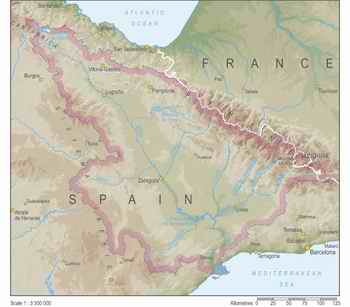
Environmental groups are planning a large demonstration in Talavera de la Reina on 20th June to campaign for the recovery of the longest river in Iberia, the Tajo (Tagus).
Thanks to Damien Martin of the excellent Wild Spain for bringing this to my attention. He notes here:
The rally…seeks to bring attention to the fact that 80% of the Tagus is siphoned off to fuel industrial agriculture and urban development in the Spanish Mediterranean regions of Murcia, Alicante and Almería (fruit and veg for export, golf courses for ex-pats and tourists) and that the small portion which finally flows into Portugal is heavily polluted with effluent from Madrid.
The Tagus Network (Red del Tajo) have produced this PDF in English:
All Spanish and Portuguese children are taught that the Tagus, the longest river in the Iberian Peninsula, has its source in the Albarracín Mountains of Spain and runs westwards for over 1000 km, before flowing into the Atlantic next to the Portuguese capital, Lisbon. Sadly this schoolbook statement is currently fiction or, to be exact, only 20% true. The fact is 80% of the Tagus is siphoned off to fuel industrial agriculture and urban development in the Spanish Mediterranean. What remains of the natural mid and lower reaches of the Tagus are a shadow of their former selves, heavily polluted, and, in places, little more than open sewers. Read full text in English: Battle of the Tagus: Citizens of Spain and Portugal unite to save their greatest river
-
Photo above of El Tajo at Toledo (Wikipedia)

